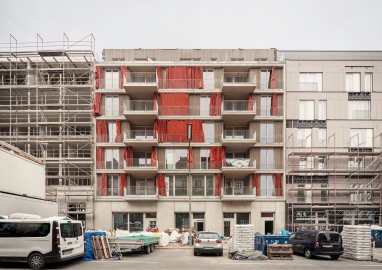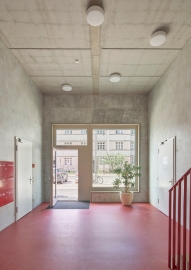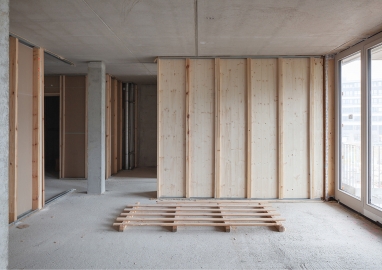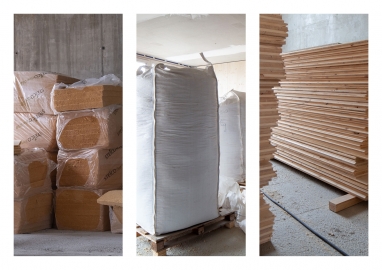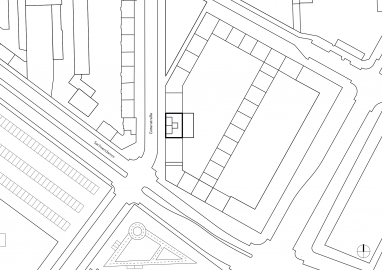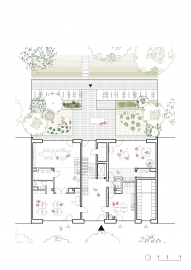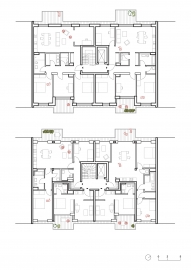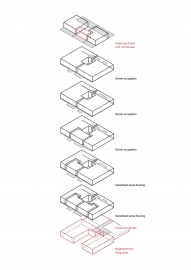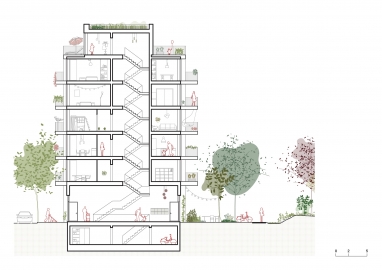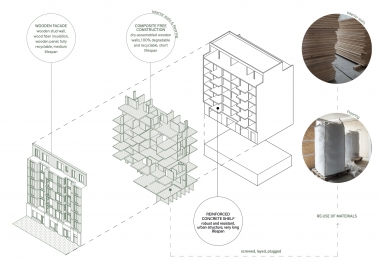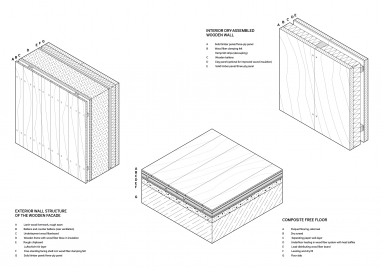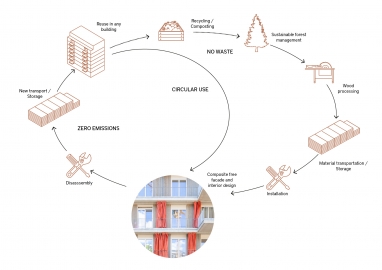Ausbauhaus Südkreuz ("House to be extended")
Ausbauhaus Südkreuz, a collective housing project, consists of owner-occupied flats, social housing units and district-related uses. The facade, built in dry and composite-free construction, and the interior fit-out made of renewable resources ensure future reparability and waste-free deconstruction of the materials.
The collective housing initiative was awarded the small plot in a concept competition organised by the city of Berlin. The 7 floors provide 13 owner-occupied flats, 3 subsidised rental flats and 2 neighbourhood-related uses. Flats range between 38 and 130 sqm and are laid out in 2 or 4 units per floor. The French balconies stretching across the entire facades and the wooden French windows create generous connections to the outside. The eligible flats and the community-oriented ground floor were co-financed by the building initiative. The 4.5-metre-high ground floor houses a neighbourhood lounge for cultural and social exchange and a training room for start-up seminars. The top floor provides a small guest flat and a shared roof terrace.
Today's new buildings will no longer be demolished or disposed of in the future but modernised and converted with an awareness of materials. Since circumstances can change quickly, the "short-term" conversion of the units is likely and necessary to ensure the long service life of a building. Hence, the building elements of the timber-concrete hybrid structure are used according to their lifecycle:
The load-bearing structure (fire walls, slabs, circulation core) in the dense urban context is built in concrete and ensures a lasting high flexibility of the column-free units.
The facade is a demountable, rear-ventilated timber framework and holds the wood-fibre insulation and the pre-aged larch cladding.
The interior fit-out of the flats, the shortest-lived part of the house, is free of composites and made of renewable materials. The floor is based on a dry-mounted structure with an unbound levelling fill of wood chips. The custom-designed dry-mounted interior walls made of timber studs, visibly clad with wood and clay panels—an ecologically worthwhile alternative to conventional drywalls—create a high quality of living.
Facade and fit-out materials were screwed, plugged in, laid or poured in a visible and detachable manner. Most surfaces are untreated or finished with a non-hazardous glaze. This construction avoiding composites facilitates future conversions, modernisation or dismantling of components that are independent of the load-bearing structure. Screwed wooden elements can be removed, worked up and reinstalled in the same or in other buildings. Wood wool panels and the unbound fill in the floor can be removed and reused.
This not only creates a valuable store of materials, but also, over decades, a more cost-effective alternative to currently common composite constructions. Building without glued and filled material layers implements the idea of recyclability, i.e. building materials can be reused and kept in the longest possible cycles (re-use effect).
Besides the timber-concrete hybrid construction, the project achieves the KfW 40 energy standard (biogas heating). Bird breeding boxes were integrated into the facade, the green roof is used for beekeeping. Specially designed wooden windows and elements provide sound insulation against the nearby motorway.

